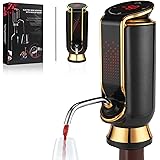Mastering Mead Craft: A Deep Dive into Your Essential Mead Making Starter Kit
The ancient art of mead making, often referred to as “honey wine,” has captivated enthusiasts for millennia. This sophisticated fermentation process transforms honey, water, and yeast into a diverse array of delightful beverages. For the aspiring mead maker, however, the initial journey can seem daunting, characterized by a complex array of equipment and intricate steps. Successfully navigating the early stages of homebrewing mead often hinges upon having access to the right tools, thoughtfully curated to simplify the process without compromising quality.
A well-designed **mead making starter kit** is not merely a collection of components; it represents a streamlined pathway into a rewarding hobby. Such a kit is engineered to mitigate common beginner pitfalls, ensuring that new brewers can focus on the nuances of fermentation rather than struggling with inadequate or missing equipment. As was observed in the accompanying video, the thoughtful selection of each item in a comprehensive kit can profoundly influence a beginner’s success and enjoyment, laying a robust foundation for future brewing endeavors.
The Cornerstone of Fermentation: An Advanced Fermenter Design
At the heart of any effective homebrewing setup is the primary fermenter, the vessel where the initial magical transformation of honey into mead occurs. For beginners, the design of this component is paramount, as ease of use directly translates to a reduced likelihood of common issues such as oxidation or contamination. The custom fermenter highlighted in the video exemplifies thoughtful engineering, particularly with its integrated spigot, which is strategically positioned above the potential yeast cake.
This design feature simplifies the critical process of transferring the liquid, often termed “racking,” from primary to secondary fermentation, or subsequently for bottling. Imagine if the spigot were absent; the entire fermenter would need to be lifted and tilted, potentially disturbing the settled yeast and sediment, which are referred to as the “lees.” Such disturbance can lead to cloudy mead and off-flavors. Consequently, the spigot dramatically enhances convenience and helps maintain the clarity and integrity of the evolving mead, proving invaluable for those just beginning their exploration of the craft.
Ensuring a Controlled Environment: The Role of the Airlock and Lid
The anaerobic environment within the fermenter is meticulously maintained by a properly sealed lid, which is designed to accommodate an airlock. An airlock is a deceptively simple yet indispensable piece of equipment, allowing carbon dioxide—a byproduct of yeast activity during fermentation—to escape, while simultaneously preventing airborne contaminants and oxygen from entering the fermenter. This unidirectional gas exchange is crucial for preventing spoilage and maintaining the delicate balance required for successful mead production.
The inclusion of a ready-to-use lid and airlock in a **mead making starter kit** eliminates a significant hurdle for novices. Often, sourcing compatible lids and airlocks separately can be a source of frustration, potentially leading to ill-fitting seals and compromised fermentation. Therefore, having these components perfectly matched ensures that the internal environment remains pristine, protecting the developing honey wine from undesirable microorganisms and oxidative processes, which can degrade flavor and aroma profiles.
Demystifying Alcohol Content: The Hydrometer’s Indispensable Function
Among the most overlooked yet fundamentally important tools for any serious brewer, especially beginners, is the hydrometer accompanied by a test tube. This instrument is the key to accurately measuring the specific gravity of the must (unfermented mead) and the finished product, thereby allowing for the calculation of alcohol by volume (ABV). Without a hydrometer, the brewer would essentially be guessing at one of the most fundamental characteristics of their mead: its strength.
The principle behind the hydrometer’s operation involves measuring the density of the liquid relative to water. A higher initial specific gravity indicates more dissolved sugars, which the yeast will convert into alcohol. By taking readings at the start and end of fermentation, the precise conversion of sugars to alcohol can be quantified. Imagine if you poured your heart into a batch of mead only to be unsure of its potency; such a situation underscores the critical role of this device. Furthermore, the test tube is equally important, providing a clean, stable vessel for taking readings without contaminating the main fermenter, an essential practice in maintaining sterility.
Precision in Process: The Significance of Temperature Monitoring
Temperature control is a silent orchestrator of fermentation, profoundly influencing yeast activity, flavor development, and the overall quality of the mead. An LCD thermometer, affixed to the fermenter, provides continuous, real-time monitoring of the internal temperature, which is a significant advantage for beginners. Different yeast strains operate optimally within specific temperature ranges; deviations can lead to stressed yeast, resulting in off-flavors, stuck fermentations, or an incomplete conversion of sugars.
For instance, fermenting too warm can produce fusel alcohols, which contribute harsh, solvent-like notes, while fermenting too cool can cause the yeast to become sluggish or even dormant. Consequently, an accurate thermometer allows the brewer to maintain ideal conditions, fostering a healthy fermentation and guiding the yeast to produce the desired esters and other flavor compounds. The ease of reading an LCD display, in contrast to less precise alternatives, empowers the novice to make informed adjustments to their environment, ensuring optimal conditions are consistently upheld for their nascent honey wine.
The Art of Bottling: Simplifying the Final Transfer
The culmination of the mead making process is often bottling, a phase where careful execution is paramount to preserve the quality achieved during fermentation. The silicone tubing coupled with a bottle filler, as described, represents a significant advancement in beginner-friendly equipment. This clever combination attaches securely to the fermenting vessel, and liquid is only dispensed when the tip of the filler is pressed against the bottom of a bottle.
This mechanism offers two distinct advantages. Firstly, it provides precise control over the fill level, ensuring consistency across all bottles and minimizing headspace, which is the air gap between the mead and the cap. Excessive headspace can lead to oxidation, degrading the mead’s flavor over time. Secondly, and perhaps more importantly for beginners, the design dramatically reduces splashing and turbulence during transfer. Imagine manually siphoning and battling drips and overflows; this innovative tool virtually eliminates such frustrations, making the final, delicate stage of transferring your carefully crafted **mead making starter kit** creation both efficient and enjoyable. This level of convenience significantly enhances the overall homebrewing experience, making it accessible and rewarding for all.







